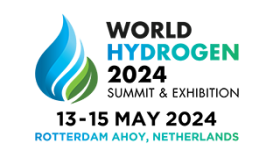Sue Robb of 4Children talks to Julie Laughton and Alison Britton from the Department for Education about the role of childminders in delivering the 30 hours free entitlement.
Making a mark for road safety
 The UK’s road markings are vanishing at an alarming rate, with well over half of white lines in Scotland and Wales almost non-existent, and England’s road markings faring little better. A snapshot survey of nearly 500 miles shows that, on average, 50.6 per cent of the UK’s road markings examined are barely visible. The proportion of roads falling into the “emergency repairs” bracket stands at 23 per cent; while less than seven per cent of road markings score the highest rating.
The UK’s road markings are vanishing at an alarming rate, with well over half of white lines in Scotland and Wales almost non-existent, and England’s road markings faring little better. A snapshot survey of nearly 500 miles shows that, on average, 50.6 per cent of the UK’s road markings examined are barely visible. The proportion of roads falling into the “emergency repairs” bracket stands at 23 per cent; while less than seven per cent of road markings score the highest rating.
By contrast, a survey carried out 12 months earlier on the UK’s 10 most dangerous roads showed that 23 per cent of centre lines fell into the lowest category while 31 per cent qualified for the highest rating.
The Road Safety Markings Association (RSMA) carried out the latest spot-check across a range of motorways and major A roads managed by the Highways Agency, and lesser A and B roads managed by local authorities. The results from this snapshot survey are of obvious concern to George Lee, national director of the Road Safety Markings Association.
“These findings are shocking,” he says. “We could see a clear, direct correlation between deadly roads and deadly road markings when we examined the 10 most dangerous roads identified by the Road Safety Foundation. Now, just a simple cross-section of roads – arguably representative of the entire network – shows a level of deterioration that defies belief.”
“We recognise that the UK is currently under huge financial pressure, but road markings are widely recognised to provide the best, most simple navigation aid to drivers, and to be the most cost-effective road safety measure and it is time we gave drivers the vital clues they need to use our roads.”
The RSMA will be conducting its comprehensive annual survey of the road markings on Britain’s roads over the summer and the results will be published in its 2012 LifeLines Report in the Autumn. In the meantime, the association is continuing to put pressure on Government so that it recognises that standards, compliance and research are the key areas it needs to address if it is to achieve the goals set out in its Strategic Framework for Road Safety.
In evidence to the Transport Select Committee inquiry into the Government’s road safety framework, the RSMA has insisted that the only way the delicate balance of satisfying the demands of the debt crisis, whilst continuing to improve the UK road safety record, can be kept is by a more rigorous approach to standards and a more objective and enlightened attitude to commissioning research.
The RSMA has also sounded a warning bell on the Government’s commitment to localism at any cost. The association has supported the knowledge, expertise and experience of highways engineers operating in local authorities being used to best effect and has supported local decisions that are made in light of local and unique circumstances. However, it is concerned that central Government’s dogmatic adherence to a localism agenda may result in a lowering of standards, of road markings in particular, on local authority controlled roads.
Rigorous Standards
Illustrating the need for rigorous standards and control, the RSMA points to the fact that two-thirds of all Britain’s road deaths and serious injuries are on rural A-roads; those roads under local authority management. Yet, of more than 60 single-carriageway A-roads surveyed by the RSMA for its 2011 LifeLines Report, totalling more than 1,000 miles, on average 14 per cent of road markings were completely worn out; and a further 15 per cent fell into the ‘amber’ zone and should be scheduled for replacement. Just 29 per cent of lines reached the acceptable level of visibility.
The association has warned the Select Committee that currently there is no standard set by the Government to which local authorities should maintain their road markings, nor even a guidance note. The association claims that such technical assurances must be put in place before local authorities are given freer rein. The association has made these concerns known to the Minister of State for Transport, Mike Penning MP, and has insisted that the creation of “more room for local flexibility and innovation” as stated in the Government’s framework document must come with a guarantee of standards.
Compromised Safety
“If ‘empowerment of local citizens and local service providers’ is to be effective in terms of road safety, it must be introduced hand-in-hand with nationally recognised, set standards for the quality and maintenance of road markings,” claims George Lee.
“Central standards must be set before national control is lightened. Unless these are put in place safety will be compromised and local authorities may leave themselves open to expensive legal actions as the decision as to whether or not acceptable standards are being met becomes a matter which the courts decide in light of crashes.
“Localism is democratic and acceptable: loss of control of safety standards is not,” says Lee. He points out that the Government sets out its responsibilities as setting national standards for safe and responsible driving, and providing national services, such as driving tests, licensing and vehicle checks. “Worryingly, says Lee, “it does not refer to engineering or product standards.”
Unsurprisingly, the RSMA has welcomed the Government’s belief that further measures can be taken that will provide high value for money and that clear improvements in road safety need to be “robustly analysed, considering all costs and benefits, the pressures on spending and the opportunity cost.”
The association has been quick to point out that good quality road markings are generally considered by highways engineers and road safety organisations to be one of the most cost-effective methods of improving road safety. It cites the AA’s comment that: “Lives are being saved by some of the cheapest measures in the road engineer’s toolbox: simple white lines…without exaggeration, it is true to say that a simple pot of paint can save lives.”
Likewise, the Road Safety Foundation has stated: “The high cost of emergency services, hospitals and long term care for the disabled can often be avoided through little more than the cost of a pot of paint.”
The RSMA asserts that to satisfy its call for demonstrable value-for-money road safety solutions, the Government should fund road authorities in an examination of the correlation between the quality of road safety markings and the safety of roads.
In-vehicle Technology
The Government has expressed hopes that in-vehicle technology will significantly advance safety standards. However, in response George Lee sounds a note of caution: “Unless high-quality road markings are applied and maintained, the sophisticated in-vehicle technology is in danger of being rendered useless,” he says. Lee points to a warning given jointly by the European Road Assessment Programme (EuroRAP) and the European New Car Assessment Programme (Euro NCAP) last summer. The two heavyweights in road and car safety then jointly called on the motor industry and the highways sector to work together to ensure that technologies now available in the showroom reach their potential of saving thousands of lives. They stated that the condition of road markings and signs could be the greatest hurdle in reaping the benefits of new in-car safety technology.
“This ‘hurdle’ is clear when you look at the most recent survey of Britain’s road markings which show that a third of the length of Britain’s single carriageway A roads have white lines so worn out that they do not meet standards directed by the Highways Agency for roads under its management,” says Lee.
Highways Agency
The work of the Highways Agency and its place in the Government’s framework does not escape RSMA scrutiny. The RSMA believes the fact that the findings of its 2011 LifeLines survey of Britain’s road safety markings showed that of A roads and motorways surveyed, one in five fell below the minimum specifiable standard for road markings and should be scheduled for replacement, while eight per cent had centre line markings so worn that they are barely visible. Thirty-nine per cent of dual carriageways and 38 per cent of motorways made the recommended rating used by the industry but there had been a significant drop in the quality since 2008, when 69 per cent of markings on duals reached this grade and 49 per cent on motorways.
The RSMA’s claims that the findings of its surveys throw doubt on the Highways Agency’s commitment, or control, in maintaining the safety standards of the road markings on its network. It points out that under the Highways Agency Standard TD26, if the quality of markings falls below 100 mcd (millicandelas) they should be scheduled for replacement and if the quality rates below 80 mcd they must be replaced immediately. The RSMA says that this it is clear that this is not happening. It claims that the Highways Agency needs to do more to ensure that its own technical directives and the standards it has set are met to provide safer roads with more durable safety markings; improving safety and value for money.
Further information
The Road Safety Markings Association’s 2012 LifeLines Report into the state of Britain’s road safety markings will be launched at the association’s annual conference in Leeds on 15 November.
For further information visit
www.rsma.co.uk
Company Focus
Founded in 1792, Don & Low began as a small woven textiles manufacturer in Scotland, gradually expanding its operations and diversifying its production capabilities over the years. Through strategic investments in technology and a relentless pursuit of quality, Don & Low has evolved into a leading vertically integrated manufacturer, specialising in the production of construction membranes, geotextiles, and industrial textiles & yarns.
Event Diary
UKREiiF has quickly become a must-attend in the industry calendar for Government departments and local authorities.
The multi-award-winning UK Construction Week (UKCW), is the UK’s biggest trade event for the built environment that connects the whole supply chain to be the catalyst for growth and positive change in the industry.
The organisers of the world’s largest dedicated hydrogen event, World Hydrogen 2024 Summit & Exhibition have announced it’s return to Rotterdam in May 2024, with an expansion of a whole extra summit day. Sustainable Energy Council (SEC) are partnering with the Government of the Netherlands, the Province of Zuid-Holland, the City of Rotterdam, and the Port of Rotterdam to host an extended, larger scale Summit in 2024, to expand the event to meet the surging demand.
Supplier Profiles
Neat Seats
Neat Bins, Part of Neat Seats Ltd is a company that specialises in cleaning all your wheeled bins
Would you like to become a Gas Safe Engineer, Electrician or a Renewable engineer.
Let us show you the way…….
Latest Features
Professor Harith Alani, director of the Knowledge Management Institute at the Open University explains how AI can be used for good and bad.
Alex Lawrence, head of health & social care, techUK sets out techUK’s Five Point Plan for CareTech.












